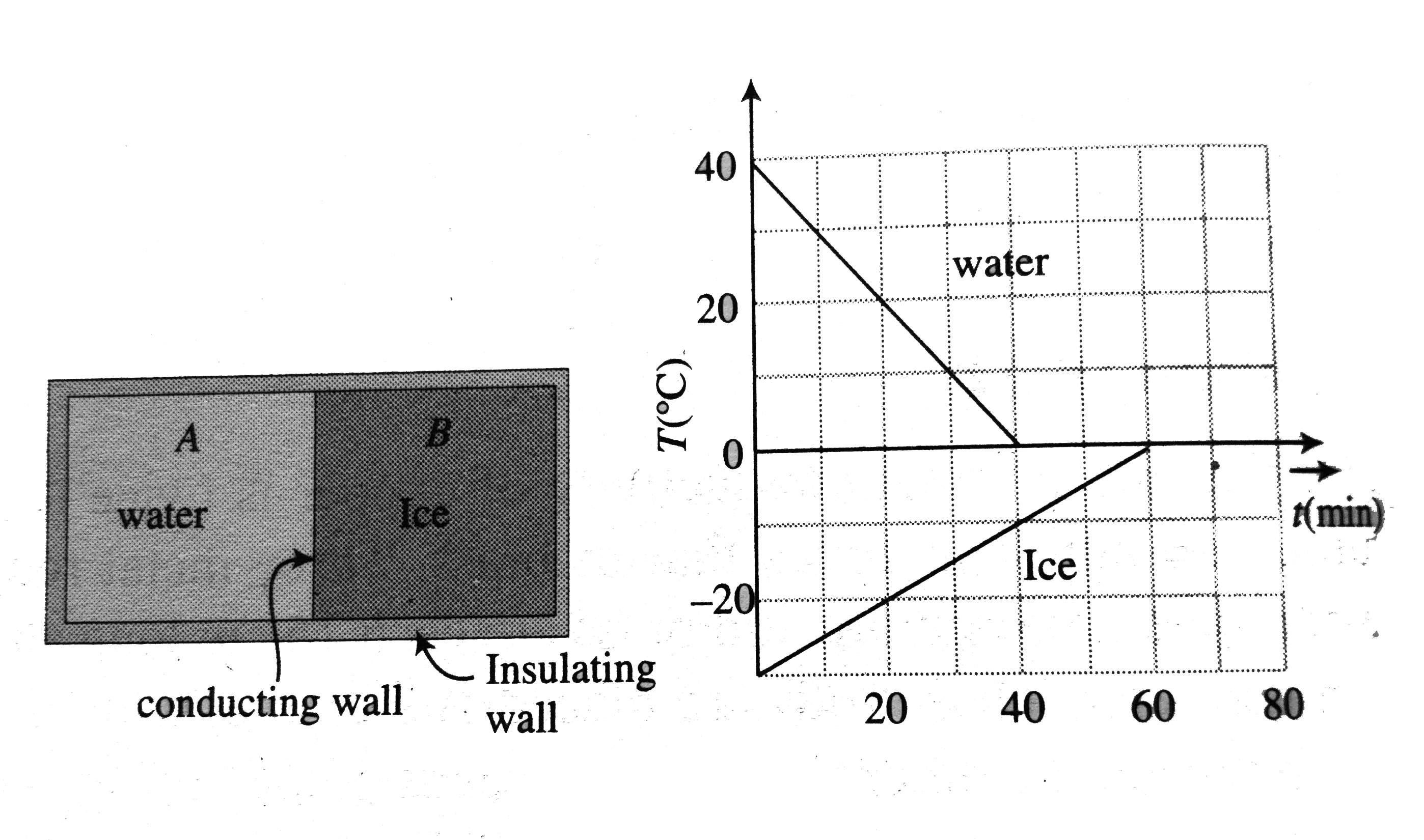If we add a lump of ice to a tumbler containing water :
heat flows from water to ice
heat flows from ice to water
heat flows from water to ice if water is more
heat flows from ice to water if ice is more.
The correct Answer is:A
Step-by-Step Solution:
1. Understanding the Scenario: We have a tumbler containing water at a certain temperature and we are adding a lump of ice to it.
2. Identifying Temperature Differences: The temperature of the water is higher than the temperature of the ice. This is important because heat transfer occurs from a region of higher temperature to a region of lower temperature.
3. Direction of Heat Flow: Since the water is at a higher temperature compared to the ice, heat will flow from the water to the ice. This is in accordance with the second law of thermodynamics, which states that heat naturally flows from hot to cold.
4. Conclusion: Therefore, when we add a lump of ice to the tumbler of water, the heat flows from the water to the ice.
Final Answer: Heat flows from the water to the ice.
---
Topper's Solved these Questions
- BOOK - ICSECHAPTER - HEATEXERCISE - TEST YOURSELF (SHORT/LONG ANSWER TYPE QUESTIONS)56videos
HEAT
- BOOK - ICSECHAPTER - HEATEXERCISE - TEST YOURSELF (NUMERICALS )7videos
HEAT
- BOOK - ICSECHAPTER - HEATEXERCISE - TEST YOURSELF (MATCH THE COLUMN)1videos
HEAT
- BOOK - ICSECHAPTER - FORCE AND PRESSURE : MOTION EXERCISE - EXERCISES (SECTION II) (Picture Study)4videos
FORCE AND PRESSURE : MOTION
- BOOK - ICSECHAPTER - LIGHT ENERGYEXERCISE - EXERCISE (PICTURE STUDY)10videos
LIGHT ENERGY
Similar Questions
Knowledge Check
- Question 1 - Select One
Melting of ice into water is a
Achemical changeBphysical changeCirreversible changeDperiodic change
A plece of ice floats in a beaker containing water with a certain fraction inside water. If the density of ice is D and that of water is ρ find the value of n. What will happen to the level of water when the ice completely melts ?
View SolutionIce pieces are floating in a beaker A containing water and also in a beaker B containing miscible liquid of specific gravity 1.2 When ice melts, the level of
View SolutionOn the pan of a spring balance , is placed a beaker containing water . How will the reading of spring balance change if we dip our finger in this water ?
View SolutionWhy do we add alum to purify water ?
View SolutionA piece of ice is floating in a vessel containing water and inside the ice is a bubble of air. What will be the effect on the level of water, when the ice melts?
View Solution
A 0.60 kg sample of water and a sample of ice are placed in two compartmetnts A and B separated by a conducting wall, in a thermally insulated container. The rate of heat transfer from the water to the ice through the conducting wall is constant P, until thermal equilibrium is reached. The temperature T of the liquid water and the ice are given in graph as functions of time t. Temperature of the compartments remain homogeneous during whole heat transfer process. Given specific heat of ice =2100J/kg−K, specific heat of water =4200J/kg−K, and latent heat of fusion of ice =3.3×105J/kg.
Initial mass of the ice in the container equal toView Solution
A 0.60 kg sample of water and a sample of ice are placed in two compartmetnts A and B separated by a conducting wall, in a thermally insulated container. The rate of heat transfer from the water to the ice through the conducting wall is constant P, until thermal equilibrium is reached. The temperature T of the liquid water and the ice are given in graph as functions of time t. Temperature of the compartments remain homogeneous during whole heat transfer process. Given specific heat of ice =2100J/kg−K, specific heat of water =4200J/kg−K, and latent heat of fusion of ice =3.3×105J/kg.
Initial mass of the ice in the container equal toView Solution

